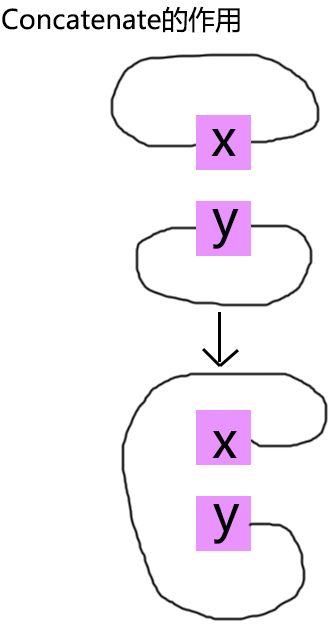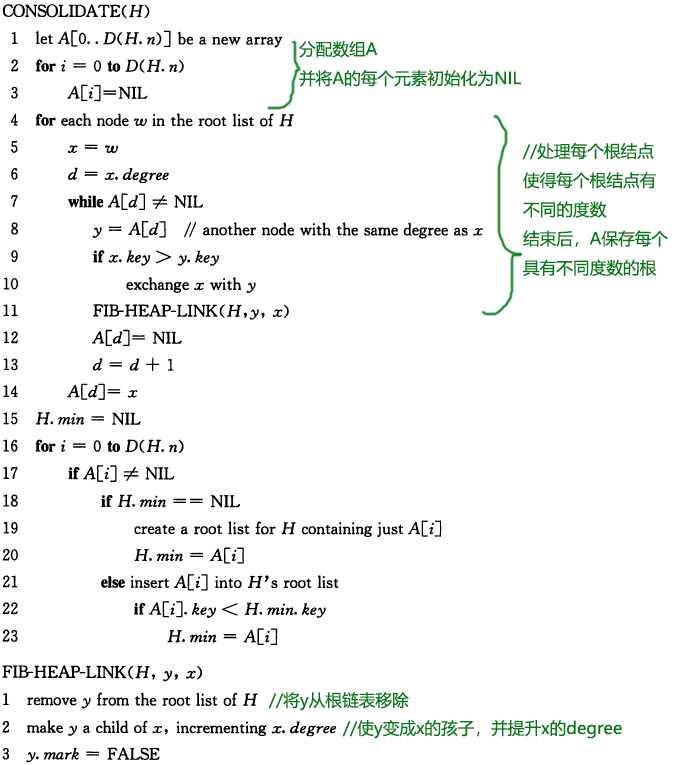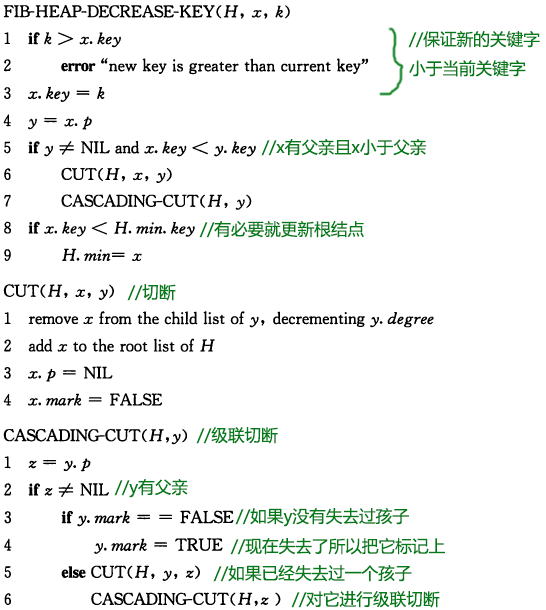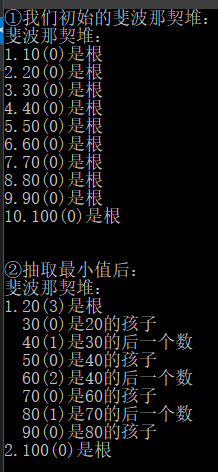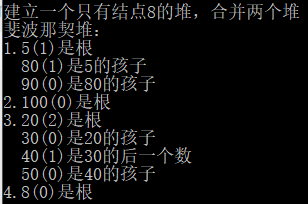《算法导论》第十九章——斐波那契堆
虽然写这个博客主要目的是为了给我自己做一个思路记忆录,但是如果你恰好点了进来,那么先对你说一声欢迎。我并不是什么大触,只是一个菜菜的学生,如果您发现了什么错误或者您对于某些地方有更好的意见,非常欢迎您的斧正!
可合并堆
可合并堆是支持以下5种操作的一种数据结构,其中每个元素都有一个关键字:
MakeHeap():创建和返回一个新的不含任何元素的堆
Insert(H,x):将一个已填入关键字的元素x插入堆H中
Minimum(H):返回一个指向堆H中具有最小关键字的元素的指针
ExtractMin(H):从堆H中删除具有最小关键字的元素,并返回一个指向该元素的指针
Union(H1,H2):创建并返回一个包含堆H1和堆H2中所有元素的堆。堆H1与堆H2则销毁。
斐波那契堆还支持:
DecreaseKey(H,x,k):将堆H中的元素x的关键字赋予新值k。k不大于当前关键字。
Delete(H,x):从堆H中删除元素x
19.1斐波那契堆结构
每个结点包含
x.p指向父结点的指针
x.child指向它某个孩子的指针
x.degree储存孩子数目
x.mark指示上一次成为另一个结点的孩子后,是否失去过孩子
每个孩子y都有指针y.left和y.right,分别指向左右兄弟
x的所有孩子被链接成一个环形的双向链表,成为x的孩子链表。(各兄弟出现顺序任意)
孩子链表的优点:
1、可以在O(1)时间内从一个环形链表的任何位置插入一个结点或删除一个结点
2、给定两个链表,可以用O(1)时间把它们连接
所有树的根都用left与right连接在一起,成为根链表

势函数
t(H):H根链表中树的数目
m(H):H中已经标记的结点
则势函数:θ(H)=t(H)+2m(H)
19.2可合并操作堆
①创建一个新的斐波那契堆
H.min:斐波那契堆中最小的结点
H.n:斐波那契堆的结点数量
H.min初始化为NULL
H.n初始化为0
③寻找最小结点(没有写函数)
其实就是H.min
④两个斐波那契堆的合并
简单地合并H1与H2,并且把H.min更新为两个中小的那个。
第3行函数Concatenate:
⑤抽取最小结点
这边写的有点复杂,我就精简一下:
步骤一:去掉根结点,把它的所有孩子都放入根链表
步骤二:努力地把根链表中散落的数串在一起,使得斐波那契堆里所有的树都不一样高!
步骤二的实现可能比较麻烦,具体的图解我们可以参考一下skywang12345的博客,我觉得他的图画的就十分不错,也是在抽取最小结点那个地方。
附上链接:
https://www.cnblogs.com/skywang12345/p/3659069.html
这边我对Consolidate想了很久,终于想通了它的原理:A的一个指向根结点的数组。A[0]存的是degree=0的根,A[1]存的是degree=1的根…我们来看一下书中的例图:这边我们看到(c)中A[1]保存了一棵高度为1的树,接下来在(d)中A[2]保存了一棵高度为2的数,(e)中A[0]保存了一棵高度为0的数,但是到了(f)图的时候,根⑦的高度也是0,我们看到在伪代码第7行中while(A[d]≠NIL),这里就要进入循环了,于是我们把⑦与23合并在一起,变成了一棵高度为1的树。然后把高度为0的地方A[0]重新置为NULL。(伪代码第12行)这个时候又起冲突了!这棵树与我们原来保存的高度为1,根为17的树撞在了一起,于是我们又要合并这两棵树,变成了一棵高度为3的数。然后继续判断。
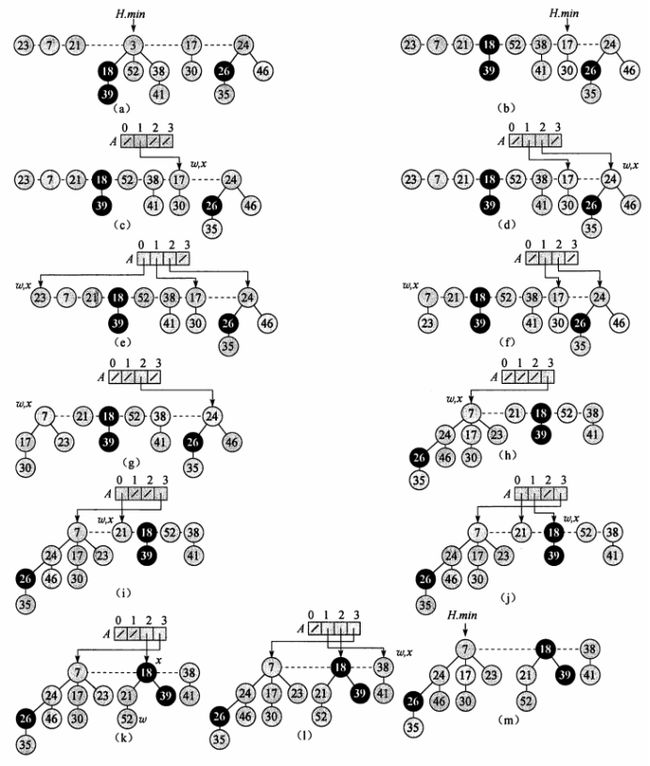
19.3关键字减值和删除一个结点
好了接下来就是代码部分了。建议粘贴到自己的编辑中运行(我不知道为什么我的代码就是没有彩色的,感觉影响观看,可能 我比较菜吧!):
斐波那契堆.h
#pragma once
#define D 5
/*斐波那契堆结点*/
typedef struct FibNode
{
int key; /*关键字值*/
int degree; /*最大度数*/
FibNode* left; /*左兄弟*/
FibNode* right; /*右兄弟*/
FibNode* parent; /*父结点*/
FibNode* child; /*孩子结点*/
bool mark; /*是否被删除第一个孩子*/
}FibNode;
/*斐波那契堆*/
typedef struct FibHeap
{
FibNode* min;
int n;/*结点个数*/
}FibHeap;
/*产生一个新的结点*/
FibNode* CreateFibNode(int data);
/*①新建一个斐波那契堆*/
FibHeap* MakeFibHeap();
/*插入函数,y是新节点*/
void InsertHeap(FibNode* x, FibNode* y);
/*②插入一个新的结点*/
void FibInsert(FibHeap* &H, FibNode* x);
/*合并函数*/
void Concatenate(FibNode* x, FibNode* y);
/*④两个斐波那契堆的合并*/
FibHeap* FibHeapUnion(FibHeap* &H1, FibHeap* &H2);
/*抽取最小节点的辅助函数*/
void NodeRemove(FibNode* x);
/*抽取最小节点的辅助函数*/
void FibHeapLink(FibHeap* &H, FibNode* x, FibNode* y);/*y成为x的孩子*/
/*抽取最小节点的辅助函数*/
void Consolidate(FibHeap* &H);
/*⑤抽取最小结点*/
FibNode* FibHeapExtractMin(FibHeap* &H);
/*切断*/
void NodeCut(FibHeap* &H, FibNode* x, FibNode* y);
/*级联切断*/
void CascadingCut(FibHeap* &H, FibNode* y);
/*⑥关键字减值*/
void FibHeapDecreaseKey(FibHeap* &H, FibNode* x, int k);
/*⑦删除一个结点*/
void FibHeapDelete(FibHeap* &H, FibNode* x);
/*打印辅助*/
void Print_1(FibNode* x, FibNode* prev, int direction);
/*打印斐波那契堆*/
void FibPrint(FibHeap* &H);
/*测试程序*/
void TestFibHeap();
斐波那契堆.cpp
#include "斐波那契堆.h"
#include
#include
#include
using namespace std;
/*产生一个新的结点*/
FibNode* CreateFibNode(int data)
{
FibNode* fn = new FibNode();
if (fn != NULL)
{
fn->parent = NULL;
fn->child = NULL;
fn->left = NULL;
fn->right = NULL;
fn->key = data;
fn->mark = false;
}
else
{
cout << "开辟结点失败!" << endl;
}
return fn;
}
/*①新建一个斐波那契堆*/
FibHeap* MakeFibHeap()
{
FibHeap* H = new FibHeap();
if (H == NULL)
cout << "创建失败!" << endl;
H->min = NULL;
H->n = 0;
return H;
}
/*插入函数,y是新节点*/
void InsertHeap(FibNode* x, FibNode* y)
{
y->left = x->left;
y->right = x;
y->right->left = y;
y->left->right = y;
}
/*②插入一个新的结点*/
void FibInsert(FibHeap* &H, FibNode* x)
{
if (!H->min)/*如果斐波那契堆是空的*/
{
x->left = x;
x->right = x;
H->min = x;
}
else
{
InsertHeap(H->min, x);
if (x->key < H->min->key)/*有必要的话,更新H.min*/
H->min = x;
}
H->n++;/*结点数量+1*/
}
/*合并函数*/
void Concatenate(FibNode* x, FibNode* y)
{
FibNode* tmpx = x->left;
FibNode* tmpy = y->left;
x->left = y;
tmpy->right = x;
y->left = x;
tmpx->right = y;
}
/*④两个斐波那契堆的合并*/
FibHeap* FibHeapUnion(FibHeap* &H1, FibHeap* &H2)
{
if (!H1)return H2;/*如果H1为空,就直接返回H2*/
if (!H2)return H1;/*如果H2为空,就直接返回H1*/
Concatenate(H1->min, H2->min);
if (H2->min->key < H1->min->key)
H1->min = H2->min;
H1->n += H2->n;
return H1;
}
/*抽取最小节点的辅助函数*/
void NodeRemove(FibNode* x)
{
x->left->right = x->right;
x->right->left = x->left;
}
/*抽取最小节点的辅助函数*/
void FibHeapLink(FibHeap* &H, FibNode* x, FibNode* y)/*y成为x的孩子*/
{
NodeRemove(y);/*把y从根链表中移除*/
if (!x->child)/*如果x没有孩子*/
{
x->child = y;
y->left = y;
y->right = y;
}
else
{
InsertHeap(x->child, y);
}
y->parent = x;
x->degree++;
y->mark = false;
}
/*抽取最小节点的辅助函数*/
void Consolidate(FibHeap* &H)
{
FibNode* A[D + 1] = { NULL };
FibNode* sentinel = H->min->left;/*哨兵*/
bool flag = true;
for (FibNode* w = H->min, *next; flag; w = next)/*处理每个根结点*/
{
if (w == sentinel)/*只有一个结点*/
flag = false;
next = w->right;
FibNode* x = w;
int d = x->degree;
while (A[d])
{
FibNode* y = A[d];
if (x->key > y->key)/*查找最小节点*/
{
FibNode* tmp = x;
x = y;
y = tmp;
}
FibHeapLink(H, x, y);
A[d++] = NULL;
}
A[d] = x;
}
H->min = NULL;
for (int i = 0; i <= D; i++)
{
if (A[i])
{
if (!H->min)/*根结点为空*/
{
A[i]->left = A[i]->right = A[i];
H->min = A[i];
}
else
{
InsertHeap(H->min, A[i]);
if (A[i]->key < H->min->key)
H->min = A[i];
}
}
}
}
/*⑤抽取最小结点*/
FibNode* FibHeapExtractMin(FibHeap* &H)
{
FibNode* z = H->min;
if (z)
{
bool flag = true;
for (FibNode* x = z->child, *next; x&&flag; x = next)
{
next = x->right;
if (next == z->right)/*只有根结点*/
flag = false;
InsertHeap(H->min, x);
x->parent = NULL;
}
NodeRemove(z);
if (z == z->right)
H->min = NULL;
else
{
H->min = z->right;
Consolidate(H);
}
H->n--;
}
return z;
}
/*切断*/
void NodeCut(FibHeap* &H, FibNode* x, FibNode* y)
{
if (x == x->right)/*只有x一个孩子*/
y->child = NULL;
else
{
if (x == y->child)
y->child = x->left;
NodeRemove(x);
}
y->degree--;
InsertHeap(H->min, x);/*把x插入根链表*/
x->parent = NULL;
x->mark = false;
}
/*级联切断*/
void CascadingCut(FibHeap* &H, FibNode* y)
{
FibNode* z = y->parent;
if (z)
{
if (!y->mark)
y->mark = true;
else
{
NodeCut(H, y, z);
CascadingCut(H, y);
}
}
}
/*⑥关键字减值*/
void FibHeapDecreaseKey(FibHeap* &H, FibNode* x, int k)
{
if (k > x->key)
{
cout << "数值错误";
return;
}
x->key = k;
FibNode* y = x->parent;
if (y&&x->key < y->key)
{
NodeCut(H, x, y);
CascadingCut(H, y);
}
if (x->key < H->min->key)
H->min = x;
}
/*⑦删除一个结点*/
void FibHeapDelete(FibHeap* &H, FibNode* x)
{
FibHeapDecreaseKey(H, x, -100);
FibHeapExtractMin(H);
}
/*打印辅助*/
void Print_1(FibNode* x, FibNode* prev, int direction)
{
FibNode* start = x;
if (x == NULL)return;
do
{
if (direction == 1)
{
cout <<" "<< x->key << "(" << x->degree << ")是" << prev->key << "的孩子" << endl;
}
else
{
cout <<" "<< x->key << "(" << x->degree << ")是" << prev->key << "的后一个数" << endl;
}
if (x->child != NULL)
Print_1(x->child, x, 1);
prev = x;
x = x->right;
direction = 2;
} while (x != start);
}
/*打印斐波那契堆*/
void FibPrint(FibHeap* &H)
{
int i = 0;
FibNode* p;
if (H->min == NULL)
return;
cout << "斐波那契堆:" << endl;
p = H->min;
do
{
i++;
cout << i << "." << p->key << "(" << p->degree << ")是根" << endl;
Print_1(p->child, p, 1);
p = p->right;
} while (p != H->min);
cout << endl;
cout << endl;
}
/*测试程序*/
void TestFibHeap()
{
FibHeap* H= MakeFibHeap();
FibNode* y = CreateFibNode(0);
FibNode* z = CreateFibNode(0);
for (int i = 0; i < 10; i++)
{
FibNode* x = CreateFibNode((i+1)*10);
if (i == 5)
y = x;
if (i == 6)
z = x;
FibInsert(H, x);
}
cout << "①我们初始的斐波那契堆:" << endl;
FibPrint(H);
cout << "②抽取最小值后:" << endl;
FibHeapExtractMin(H);
FibPrint(H);
cout << "③我们把60降到5" << endl;
FibHeapDecreaseKey(H, y, 5);
FibPrint(H);
cout << "④删除70后" << endl;
FibHeapDelete(H, z);
FibPrint(H);
cout << "建立一个只有结点8的堆,合并两个堆" << endl;
FibHeap* H2 = MakeFibHeap();
FibNode* w = CreateFibNode(8);
FibInsert(H2, w);
H2 = FibHeapUnion(H, H2);
FibPrint(H2);
}
主函数
#include "斐波那契堆.h"
#include
int main()
{
TestFibHeap();
getchar();
getchar();
return 0;
}




